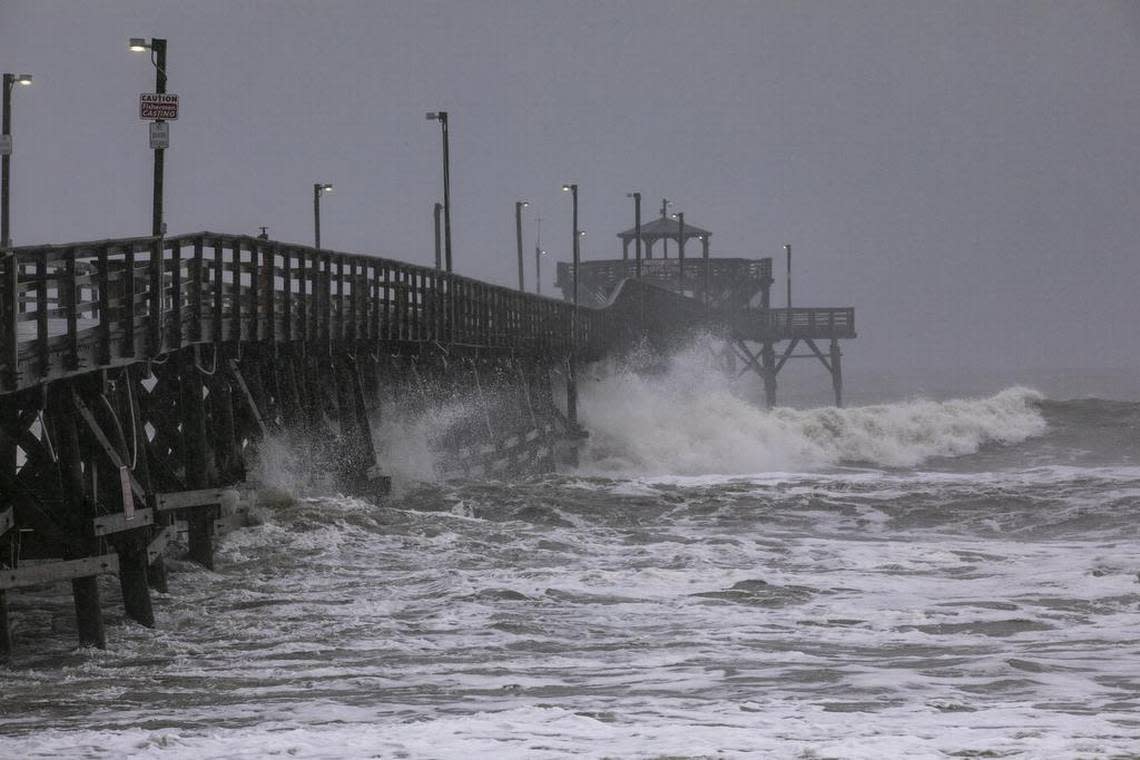Atlantic hurricane forecast worsens: How many storms may the Grand Strand have to dodge?

If the coronavirus wasn’t enough for residents in the Coastal Carolinas to worry about this summer, an active hurricane season may be upcoming.
Based on the latest models, AccuWeather forecasters have extended the upper range of hurricanes predicted for the 2020 Atlantic Basin hurricane season.
Led by AccuWeather Senior Meteorologist Dan Kottlowski, the company’s top hurricane expert, the weather service is now predicting 14 to 20 tropical storms, with the predicted number becoming hurricanes increasing to between 7 and 11.
Kottlowski also increased the number of major hurricanes – Category 3 or higher – that could develop this season to between four and six, warning that four to six named tropical systems could make direct impacts on the U.S mainland, Puerto Rico and the Virgin Islands.
The initial 2020 Atlantic hurricane forecast was released in late March and called for 14 to 18 named tropical storms, seven to nine hurricanes and two to four major hurricanes.
Indications of the La Nina weather pattern are largely responsible for the increased prediction. La Nina occurs when water temperatures in the central and equatorial Pacific are cooler than normal.
Active hurricane seasons in the Atlantic can result when a La Niña pattern is present due to a general reduction in wind shear over parts of the Atlantic Ocean, including the central and western parts of the basin, which churn out a large majority of tropical systems.
“New climate model runs show a trend toward La Niña evolving during the second half of the upcoming summer,” Kottlowski said. “This would suggest a decrease in the episodes of vertical wind shear, which can limit tropical development and intensification. This new information gives us more confidence of the potential – again, still potential – for a very active season.”
Wind shear is the phenomenon in which wind speed or direction changes with altitude. It can cause the higher parts of a hurricane/storm to be tilted in the opposite direction of where it is moving.
The 2020 season follows four straight years during which there were at least two hurricanes making U.S. landfall, with Barry and Dorian striking in 2019. That’s the longest streak since 1947-50 and only twice since 1851 has the streak reached at least five years (1932-36 and 1876-82).
The 2019 hurricane season included 10 tropical storms, two subtropical storms, two Category 1 hurricanes, one Category 2 hurricane and three major hurricanes.
“The biggest issue with this season is this trend going from a weak El Niño to a neutral pattern then to a possible La Niña,” Kottlowski said. “This climate signal pattern has been associated with above-normal seasons. The big question is just how active is it going to be?”
The Atlantic hurricane season officially lasts from June 1 through Nov. 30, when 98.4 percent of hurricanes have occurred in the Atlantic Basin.
The first tropical storm to develop this year will be named Arthur. For a complete list of names for the 2020 season and everything related to tropical weather, visit the AccuWeather Atlantic basin hurricane center. The AccuWeather global headquarters is in State College, Pennsylvania and it has other offices around the world.

